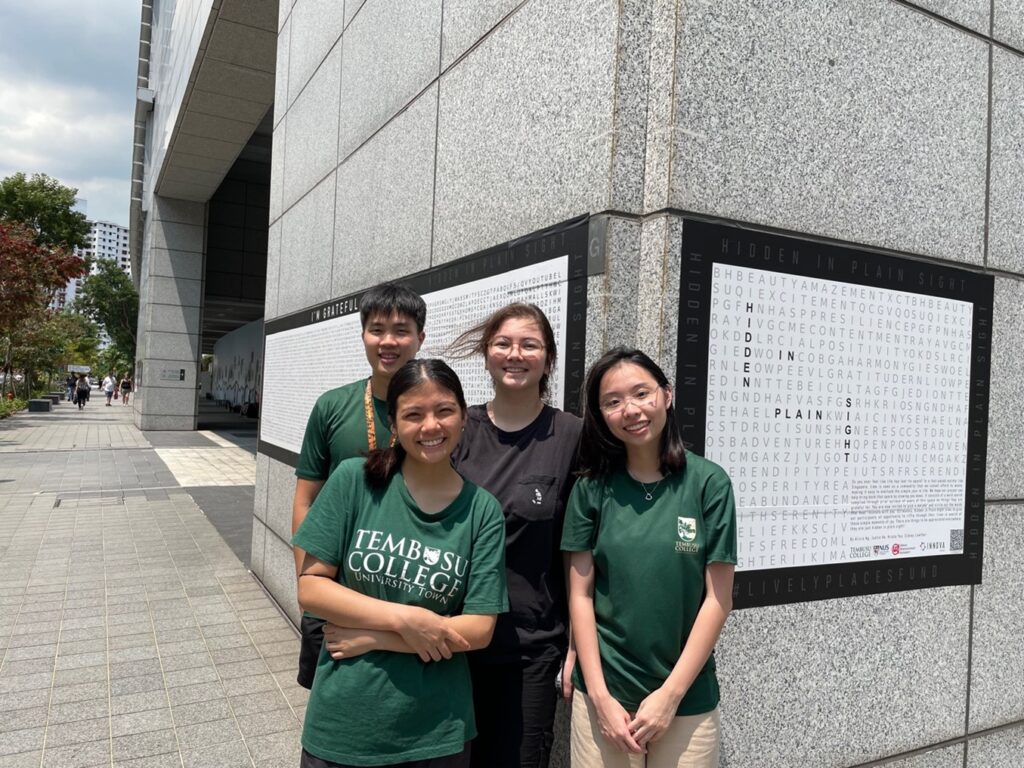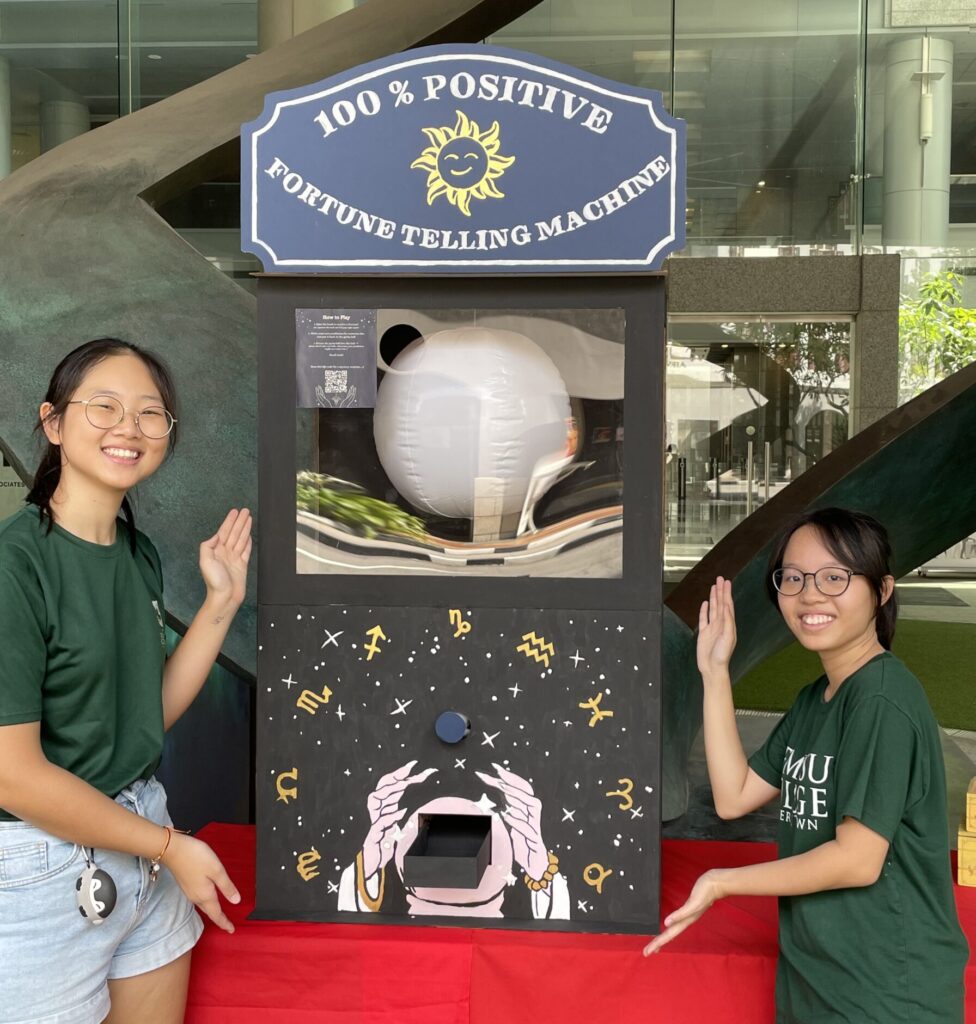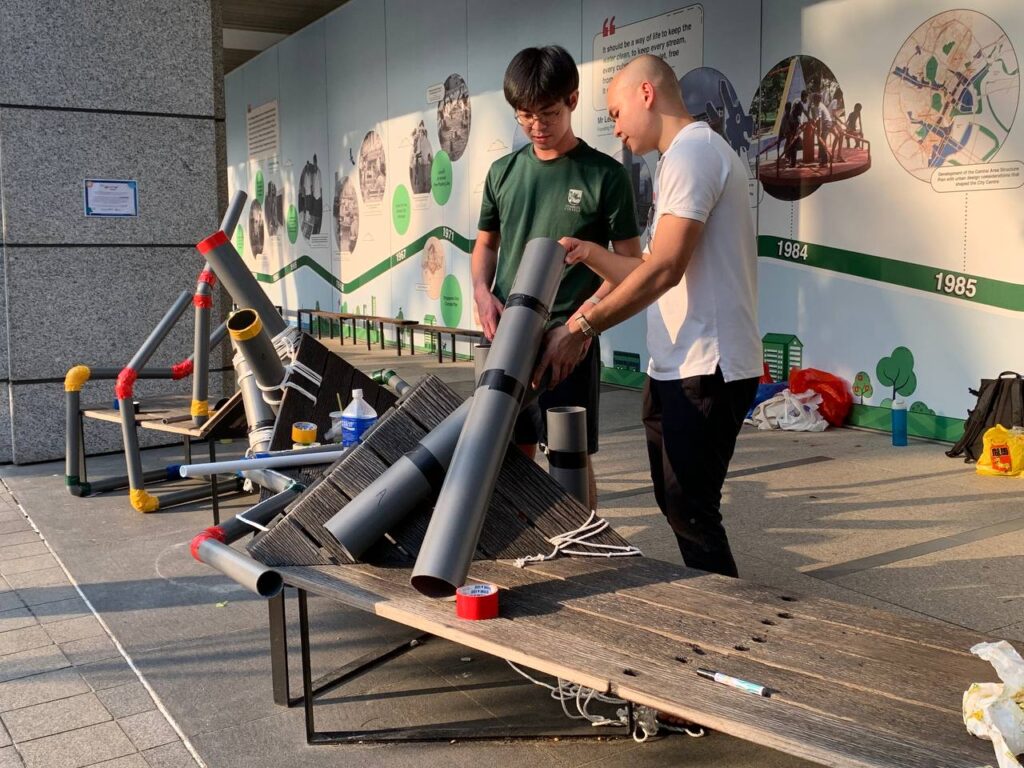Bringing the Seminar Class to CBD Communities
In AY2023-24 Semester 1, Tembusu College relaunched one of its courses, Singapore as “Model” City?, with a focus on community engagement.
This was an enthusiastic and carefully considered implementation to meet the university Communities and Engagement General Education Curriculum Pillar. Working with their community partner, the Urban Redevelopment Authority of Singapore (URA), and co-funded by the URA Lively Places Fund, students from the course created twelve fun and interesting interventions at Urban Park and the covered walkway at the URA Centre in the city between 1st to 13th November 2023.
As part of their process, students worked in interdisciplinary groups and drew connections between social science, design studies and art practice methods, observing the site and interviewing the community in the Tanjong Pagar area, before developing ideas for more meaningful and engaging public spaces for this neighbourhood. In short, their “intervention projects” explored and evaluated specific ideas on improving public space in the city.
According to Dr Margaret Tan, who taught the course,
“to understand the site, students have to first engage the community to uncover their cares and concerns. Ultimately, the aim of the intervention project is to open up the possibility of space – give new voice to the community and enliven public space for the public.“
Three examples of student interventions were:
- Hidden in Plain Sight by Justin Ho, Sidney Lawther, Alicia Ng and Krista Yeo;
- the Fortune-Telling Machine by Baey Shin Ee, John Chew, Sharon Gong, Amanda Lim and Michael Huang, and;
- Musical Chairs by Celeste Ong, Davina Sitoh, Desmond Poh, Ivan Lee and Nick Chua.
All three interventions afforded a more creative and playful engagement with city space by the communities on site, predominantly office workers. They supported this community – stressed, pre-occupied with work, and in a perpetual state of rush – pausing, relaxing, and connecting.
 (From left to right) Justin Ho, Krista Yeo, Sidney Lawther and Alicia Ng with their work Hidden in Plain Sight.
(From left to right) Justin Ho, Krista Yeo, Sidney Lawther and Alicia Ng with their work Hidden in Plain Sight.
Hidden in Plain Sight sought to slow the community down and encourage self-reflection by highlighting simple joys that are typically overlooked in our everyday life. The work took the form of a giant word-search consisting of 240 words expressing things to be grateful for, contributed by the community. The public was then invited to circle the words that most resonated with them, encouraging self-reflection and appreciation of everyday things taken for granted. The work was so successful that a version was installed in the grounds of Tembusu College.
 Sharon Gong (left) and Amanda Lim (right) posing with the custom-built Fortune-Telling Machine.
Sharon Gong (left) and Amanda Lim (right) posing with the custom-built Fortune-Telling Machine.
The Fortune-Telling Machine, on the other hand, aimed to provide the community a sense of reprieve through play, spreading positivity, and generating connections. Through a Gachapon machine custom-built by the students, the public could collect and, in turn, write positive “fortunes” for each other. As pointed out by the team:
“after noting how stressed workers seemed during our site survey, we wanted our project to spread positivity and improve their mood, on top of giving them a fun break.”

Ivan Lee (left) and Desmond Poh (right) installing Musical Chairs using everyday items.
Finally, with Musical Chairs, the work took the form of a site-specific musical instrument, built into an existing bench, and constructed out of everyday objects, such as PVC pipes, ropes, and tape. Integrated with sound sensors that lit up LED lights when played, the work encouraged play and creativity in the community, aiming to democratise musical performance.
Apart from the interventions, students also produced intervention project reports to capture their reflections on the project and their learning journey. These documents presented URA invaluable information on perceptions of public space and the effective design of community projects.
Commenting on the successful partnership, Mr Clement Lim, URA Director for Community Outreach and Programming, shared:
“It is a joy to work with the students. They dug deep and unearthed the varied layers of what makes great public spaces. They developed original and very engaging ideas and interesting prototypes that brought much delight to the community.”

